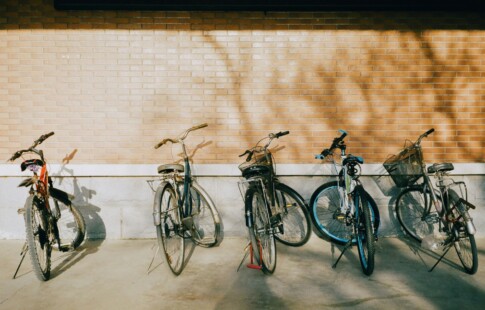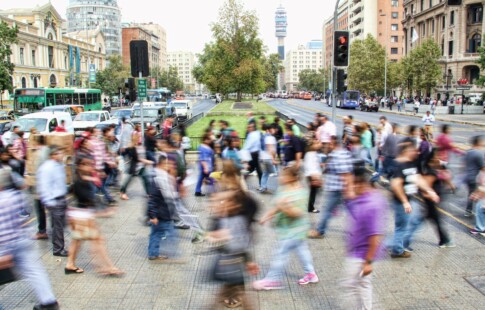
9 Projects for Sustainability and Education
We are reader-supported. When you buy through links on our site, we may earn affiliate commission.
Sustainability is everyone’s responsibility. Everybody shares in this planet’s riches and has a sacred duty to help protect it. However, humans aren’t born knowing how to do so — they must be taught. Eco-friendliness may start at home, but schools can do a lot to promote healthy environmental practices. If you’re a teacher, here are nine projects for combining sustainability and education.
1. Bin Sorting for Tiny Tots
Your little one might be old enough to drink “big boy and girl” juice or milk. However, do they know what they should do with the empty container once they finish it? Having to sort recycling twice — once more at the center because of misplaced items — can make parents develop premature grays.
Help them out with this fun activity for your daycare. You’ll need three bins and colored cutouts representing various items like milk cartons and apple cores. You can have the littles help color or paint these, sparing you from all the prep work. Then, have your class sort items by where they go — into the trash, recycling or compost bin. You can expand the activity to include various containers for different materials if your locality relies on sorting.
2. Build a Repurposing Crafts Center
Art teachers are famous for requesting used magazines for collages. However, every classroom can benefit from a crafts center full of materials for repurposing — the glossies mentioned above, old candle jars, used toilet paper and paper towel rolls.
Turn this activity into a lesson by having students share suggestions of items people can contribute. Explain that while recycling is valuable, it also takes energy to return materials to a usable form. Then, use your new cache in various class activities. For example, why not have your students figure out how much smaller, on average, a toilet paper roll is than a paper towel one when teaching percentages?
3. Calculate the Carbon Footprint
Here’s a math activity for teenage students, as it might involve a bit of algebra. However, it’s a fabulous lesson for making students reflect on the various activities that contribute to climate change.
Fortunately, you can find online calculators that make this task easier. Why not challenge your students to see how they could reduce their carbon footprint by 5% by making choices that don’t inconvenience them much — if at all? For example, could they cut down on paper use? Could you assist in this endeavor by changing your classroom practices, perhaps relying more on the whiteboard than handouts?
4. Participate in a Local Cleanup
Some schools emphasize service learning, but not all do. If yours does not, you can still introduce your students to the concept by participating in a local cleanup.
If your district has put field trips back on the menu, you’re in luck. Your first step is coordinating with administrators and other teachers to plan the event. It’s better to make it communal and invite as many adult supervisors as possible, including parents. If you can’t find a cleanup event in your community, you could go the extra mile by adopting a local park or public space and keeping it tidy with your class.
5. Build a Better Butterfly Box
Did you think you got a pass on sustainability in education because you teach shop? Not so fast. You can put your woodworking skills to the test by building butterfly boxes.
Some species are endangered, and providing homes could help preserve the population. For example, several monarch species face extinction in the desert southwest because of the destruction of their habitats.
6. Celebrate Meat-Free Monday
Did your school switch to eating lunch in the classroom during COVID? Whether or not you still embrace this practice, you can introduce your students to the concept of meatless Monday and encourage them to participate.
If you teach home economics, here’s your chance to shine. Why not have your class prepare a delicious vegan version of their favorite pizza or lasagne? Meat production accounts for nearly 15% of global carbon emissions, and cutting down on consumption can make a difference.
7. Explore Energy Vampires
Do your students have vampires lurking at home? They might — and those suckers could be draining their family’s utility bill.
Why not give your students a home energy audit activity as a homework assignment? They can search for things like drafty windows and doors, thermostats set too high or low and incandescent light bulbs instead of more eco-friendly LEDs. Your learners can then bring their reports to class and do a think-pair-share to generate a master list of ways to slay these energy vampires.
8. Add Recycling Bins to Your Classroom
Schools are supposed to serve as models. However, quite a few of them lack onsite recycling facilities, even if vending machines offer pop cans.
You can do your part, even if your district lags behind the curve. Empty printer paper boxes abound in many supply rooms. Grab one or two before they get discarded to use as classroom recycling bins or pick up a couple of bins to put around the classroom. You can have one for paper and one for plastic and cans. Who knows? Other educators might follow your sustainability lead.
Introducing Sustainability in Education
Taking care of planet earth requires everyone’s contribution. Parents play a role, but so do schools.
If you’re a teacher, follow these tips for introducing sustainability in education. Enliven your lesson plans while knowing you’re doing what you can to promote a greener future.
Share on
Like what you read? Join other Environment.co readers!
Get the latest updates on our planet by subscribing to the Environment.co newsletter!
About the author
Grace Waters
Always inspired by the natural world around her, Grace grew up exploring tide pools and hiking mountain trails, developing a deep appreciation for biodiversity and conservation. Now, Grace works as the Senior Editor of Environment.co where she covers topics related to emerging clean technologies, zero-waste initiatives, and the intersection of environmental policy and everyday living.





